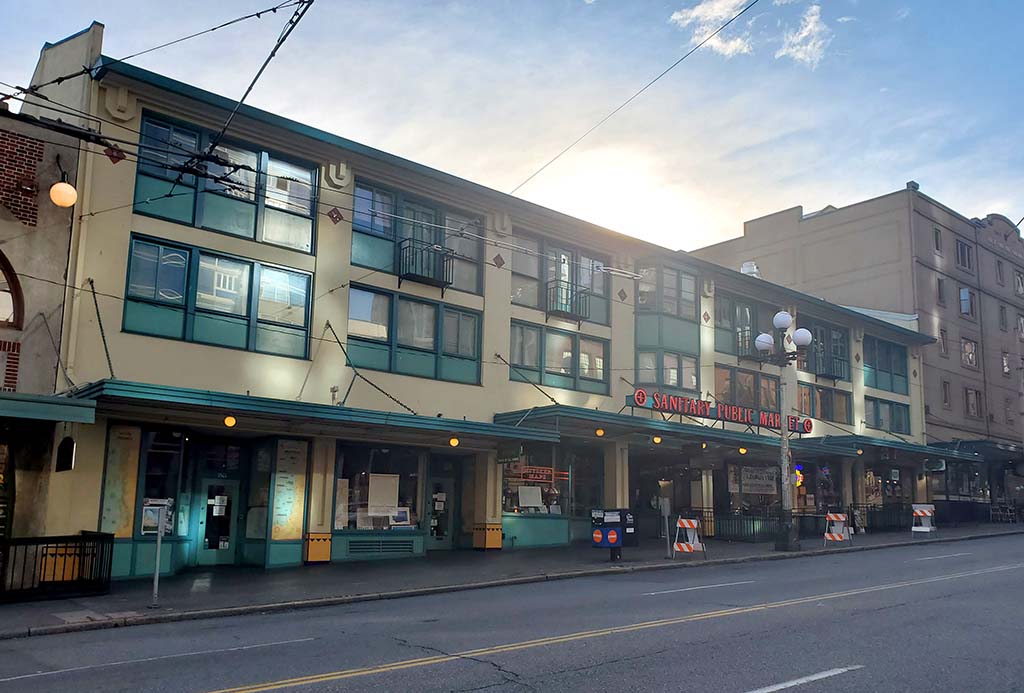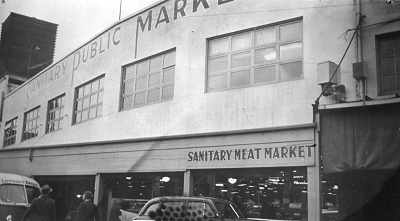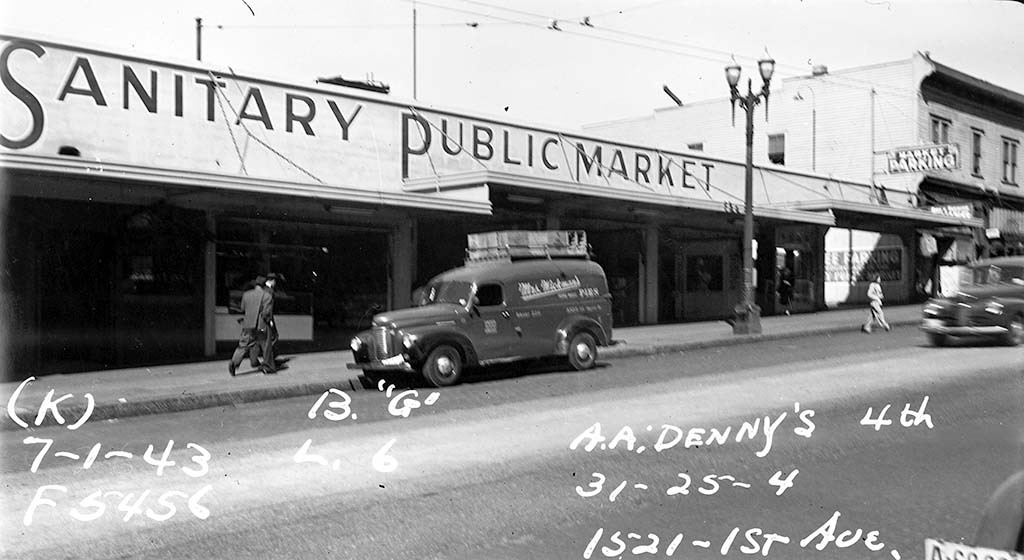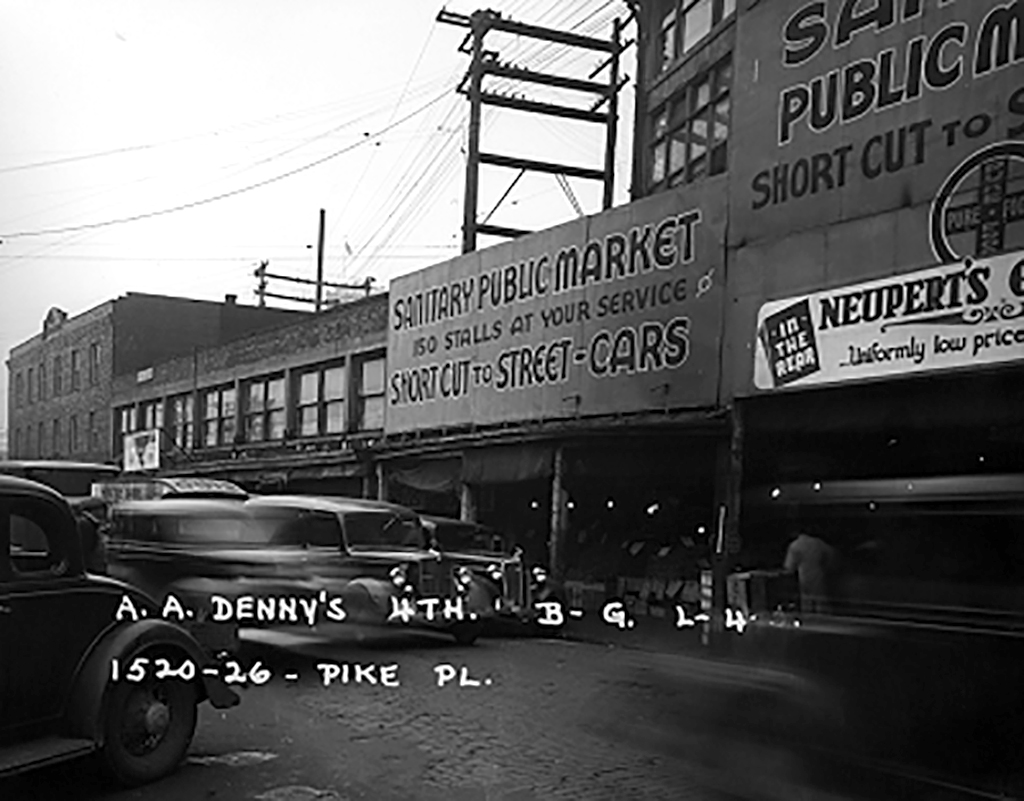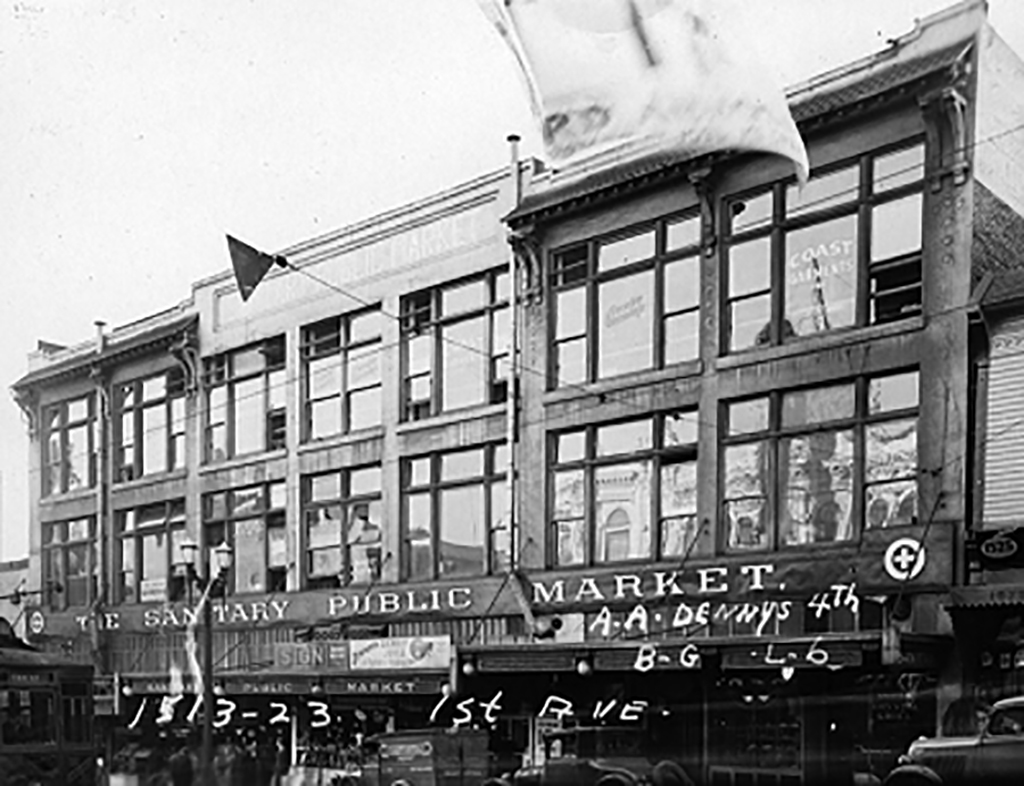West side of Pike Place, looking east to Sanitary Market
Built in 1910 as the first purpose-built market building in the neighborhood, the popular story is that the Sanitary Market got its name for not allowing horses into the building. The truth is, its “Sanitary” nature came down to concrete floors, concrete and glass counters and display cases, and numerous water and drain connections that made it possible to keep the stalls and stands exceptionally clean. It also boasted a modern refrigeration plant in the basement, and refrigerated showcases. This building opened to the public in January 1910 to great fanfare, with a reported 4,000 people in attendance.
The second floor above 1st Avenue was designed to be used as a demo kitchen with food prepared in full view of the public, samples included. The upper floor levels were accessible via ramps, much like in the Main Arcade across the street, and this building featured specially designed wagons for use by tenants to load and unload products, and scales for customers to weigh their purchases. Other amenities in the original Sanitary Market included free telephones, a drinking fountain, and public restrooms.
The completion of the Sanitary Market helped reinforce that the young Pike Place Market was here to stay, and within months of its construction, a number of workingman’s hotels were constructed to the northwest. By 1917, more than 60 businesses were established in the Sanitary Market, including four retail bakeries, seven creameries, three candy manufacturers, four fish stands, 12 produce stands, eight meat markets, and five delicatessens. In the 1920s a handful of textile manufacturers moved into the upper level, and the Three Girls Bakery relocated from the Corner Market to its present spot.
On December 15, 1941, the Sanitary Market was heavily damaged by fire. In 1942 it was partially rehabilitated to include a parking lot accessible from 1st Avenue on its top floor. As part of its renovation in 1981 the parking lot was removed, two stories were added at the 1st Avenue elevation, and one floor with recessed balconies was added at the Pike Place elevation. A central interior court and lightwell also were added.
Although the cause of the Sanitary Market’s fire was never determined, it occurred just over a week after the bombing of Pearl Harbor, a time of deep distrust, and rumors spread that Japanese farmers in the Market had something to do with it. Not long after the fire Franklin Roosevelt signed Executive Order 9066, the internment order. The impact of this forced incarceration on the character of the Market cannot be overstated: It nearly destroyed the Market outright. In 1939, 515 farmer licenses were issued, and by 1943 only 196 were issued. Roughly two-thirds of the farmers had been forced out of this farmers market.
The 1974 Urban Renewal Plan adopted by the Seattle City Council called for the removal of the Sanitary Market, and this became another battleground for the Friends of the Market. Victor Steinbrueck and the Friends maintained that this again was one of the oldest and most historically important buildings in the neighborhood. Again, the Friends succeeded, and the Sanitary Market was adapted for residential use. The subsequent rehabilitation was completed by the PDA in 1981 using a design by Market champion Fred Bassetti, a long-time admirer of the Market who was instrumental in Victor Steinbrueck’s own appreciation of the place.
Head into the Sanitary Market just north of Three Girls Bakery, and take a left to go up the stairs and out to 1st Avenue. Take a right and walk to Pike Street, stopping beside the information booth. Turn around to admire the Corner Market.

